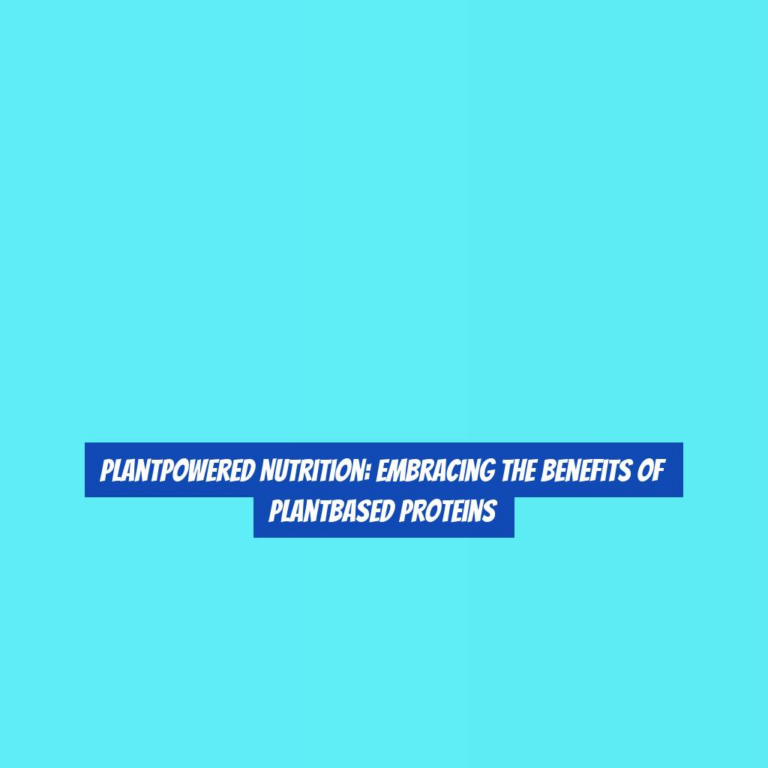PlantPowered Plate: Embracing PlantBased Foods in the Flexitarian Diet
Are you aware that the global sales of plant-based meat alternatives have grown by 45% in the past two years?
The rise of flexitarianism, a predominantly plant-based diet with the occasional inclusion of meat, has contributed to this significant shift in consumer behavior. The appeal of a flexitarian diet lies in its potential health and environmental benefits, making it an attractive option for those looking to reduce their meat consumption without fully committing to a vegetarian or vegan lifestyle.
But how exactly can you embrace plant-based foods within this flexible approach to eating?
LetG??s explore the ways in which you can elevate your plate with the power of plants while maintaining a balanced and satisfying diet.
Understanding the Flexitarian Diet
Understanding the flexitarian diet is essential for anyone looking to adopt a more plant-based eating approach while still incorporating occasional meat and animal products. This flexible and inclusive dietary pattern emphasizes plant-based foods while allowing for the occasional consumption of meat and other animal products. The focus is on increasing the intake of fruits, vegetables, whole grains, legumes, nuts, and seeds, while reducing the consumption of processed and red meats. By prioritizing plant-based foods, you can benefit from their high fiber, vitamins, minerals, and phytonutrients, which are essential for overall health and well-being.
The flexitarian approach encourages mindful and sustainable food choices, promoting a more environmentally friendly way of eating. It allows you to enjoy the health benefits associated with a plant-based diet, such as reduced risk of chronic diseases, improved weight management, and enhanced digestion, while still having the flexibility to include animal products based on personal preferences and individual needs.
Understanding the flexitarian diet empowers you to create a balanced and varied eating plan that aligns with your values and health goals.
Benefits of Plant-Based Eating
Embracing a plant-based diet offers numerous health benefits, including improved cardiovascular health, weight management, and increased intake of essential nutrients. Here are some key benefits of incorporating more plant-based foods into your diet:
-
Heart Health: A plant-based diet has been linked to a reduced risk of heart disease. The high fiber content of plant-based foods helps lower cholesterol levels, while the abundance of antioxidants and phytonutrients supports overall heart health.
-
Weight Management: Plant-based diets tend to be lower in calories and saturated fats, making them effective for weight management. The high fiber and water content in fruits, vegetables, and whole grains can also help you feel full and satisfied with fewer calories.
-
Nutrient Density: Plant-based foods are rich in essential nutrients such as vitamins, minerals, and antioxidants. By increasing your intake of these nutrient-dense foods, you can support overall health and well-being.
-
Digestive Health: The fiber found in plant-based foods promotes a healthy digestive system by supporting regular bowel movements and maintaining a healthy gut microbiome.
Incorporating Plant-Powered Proteins
If youG??re looking to boost your protein intake with plant-based options, there are a variety of delicious and nutritious choices to explore. Incorporating plant-powered proteins into your diet can be both satisfying and beneficial for your overall health.
Legumes such as lentils, chickpeas, and black beans are excellent sources of protein and can be added to soups, salads, or made into delicious veggie burgers.
Tofu and tempeh are versatile and can be marinated and grilled, added to stir-fries, or used in sandwiches for a protein-packed meal.
Quinoa, a pseudo-grain, isnG??t only high in protein but also contains all nine essential amino acids, making it a complete protein source.
Nuts and seeds, including almonds, chia seeds, and pumpkin seeds, can be sprinkled on top of yogurt, oatmeal, or salads to add protein and healthy fats to your meals.
Additionally, plant-based protein powders made from pea, hemp, or brown rice can be blended into smoothies or used in baking to increase the protein content of your favorite recipes.
Exploring Flavorful Plant-Based Recipes
To continue your exploration of plant-based foods, consider trying out some flavorful recipes that incorporate the plant-powered proteins mentioned earlier. Embracing plant-based eating doesnG??t mean sacrificing flavor. In fact, there are countless delicious and satisfying plant-based recipes that will leave you feeling nourished and satisfied.
Here are some flavorful plant-based recipes to kickstart your culinary journey:
-
Mouthwatering Lentil Tacos: Swap out traditional ground meat for hearty lentils in your next taco night. Season with a blend of cumin, chili powder, and smoked paprika for a flavorful and protein-packed twist.
-
Savory Chickpea Curry: Dive into the rich and aromatic flavors of a chickpea curry. Simmered in a fragrant blend of spices, coconut milk, and tomatoes, this dish is a comforting and satisfying option for any night of the week.
-
Quinoa Stuffed Bell Peppers: Elevate your meal with vibrant and nutrient-dense quinoa stuffed bell peppers. Packed with a savory mixture of quinoa, black beans, corn, and spices, this dish is as visually appealing as itG??s delicious.
-
Flavorful Black Bean Burgers: Whip up some homemade black bean burgers for a hearty and satisfying meal. Load them up with your favorite toppings and enjoy a flavorful and protein-rich alternative to traditional beef burgers.
Tips for Embracing a Plant-Powered Plate
Consider incorporating a variety of colorful and nutrient-rich vegetables into your meals to create a satisfying and balanced plant-powered plate. Start by experimenting with different cooking methods such as roasting, grilling, or saut+?ing to enhance the flavors and textures of the vegetables.
Incorporating a wide range of vegetables not only adds visual appeal to your plate but also ensures that you receive a diverse array of essential nutrients.
When planning your meals, aim to include a mix of leafy greens, cruciferous vegetables like broccoli and cauliflower, vibrant bell peppers, and root vegetables such as sweet potatoes and carrots. DonG??t be afraid to try new vegetables or to revisit ones you may not have enjoyed in the past. You might find that preparing them in a different way or combining them with other ingredients completely transforms their taste.
Another tip for embracing a plant-powered plate is to explore different sources of plant-based protein. Legumes, nuts, seeds, tofu, and tempeh are excellent options to incorporate into your meals to ensure youG??re getting an adequate amount of protein. Experimenting with these protein sources can add variety and depth to your plant-based meals.
Conclusion
In conclusion, embracing a plant-powered plate in the flexitarian diet offers numerous health benefits and delicious meal options.
By incorporating plant-based proteins and exploring flavorful recipes, you can enjoy a diverse and nutritious diet while reducing your environmental impact.
Remember to experiment with different plant-based foods and find what works best for you.
With a little creativity and an open mind, you can easily incorporate more plant-based foods into your diet and reap the benefits of a flexitarian lifestyle.






